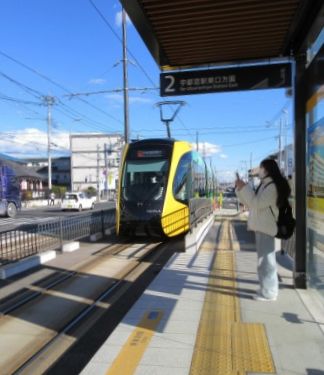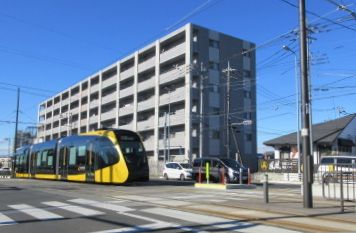The history of transportation is interesting! “City trams” are still alive and well all over Japan, they will be abolished if they cannot be managed properly.
They run through the city, so the scenery is beautiful, and they use electricity, so they are quiet and pollution-free. The downside is that they run on the same roads as cars in some places, so they are not mass transportation!
That’s why. Recently in Japan, new modern transportation lines have been opened, such as the monorail in Okinawa, since they do not run on roads, there are no traffic congestion problems. The Toyama Chiho Railway, connected to the reorganization of JR lines, is also a good example of the new attempt to change to LRT in some ways.

First, I will introduce the overview and give my impressions.
@; 19 stations (there are few tourist spots other than universities, high schools, and the Haga Town industrial park on the way, there are only four bus connections), 14.6 km, of which 9.4 km is shared with the road and 5.1 km is reserved for expressways. The low-floor carriages are 3 cars (5 cars planned), and the stations are barrier-free, but the stops are in the middle of the road, so you will need to wait at traffic lights to access the line. Payment must be made in cash using transportation cards or numbered tickets, and no change will be given (the fare is set low, a maximum of 400 yen from the first stop to the last stop). Ten local organizations have invested 1 billion yen, half of which is from Utsunomiya City. Utsunomiya City mainly bore the construction cost of 68.4 billion yen, and the western line [scheduled to open in the first half of 2030] is planned to run in front of the Education Hall.
